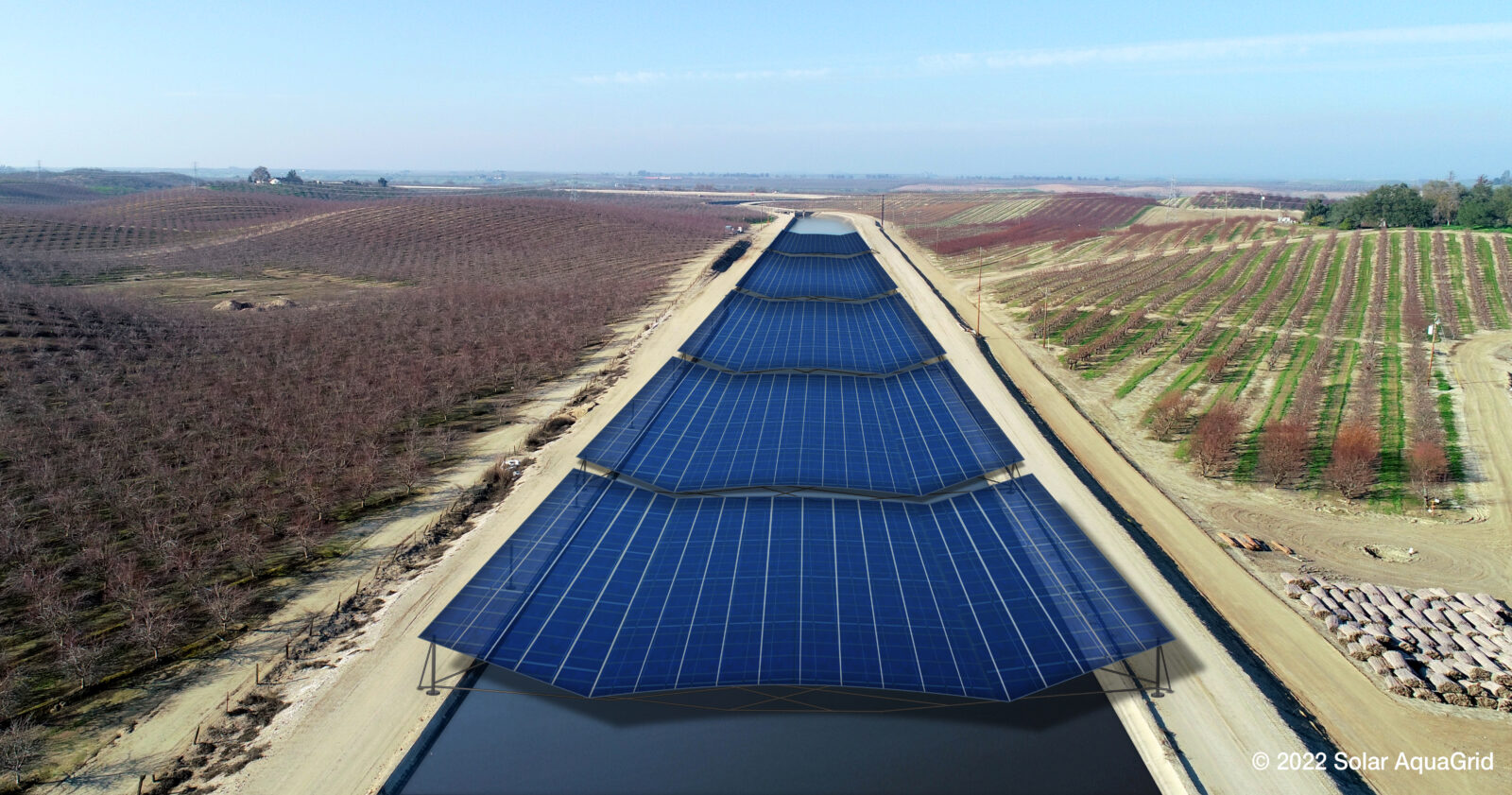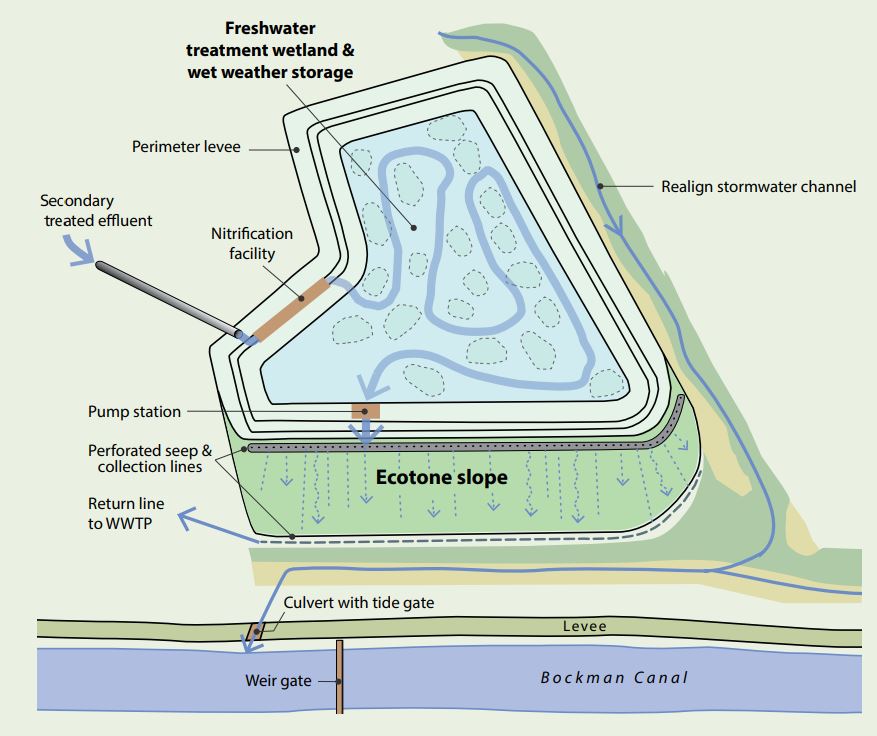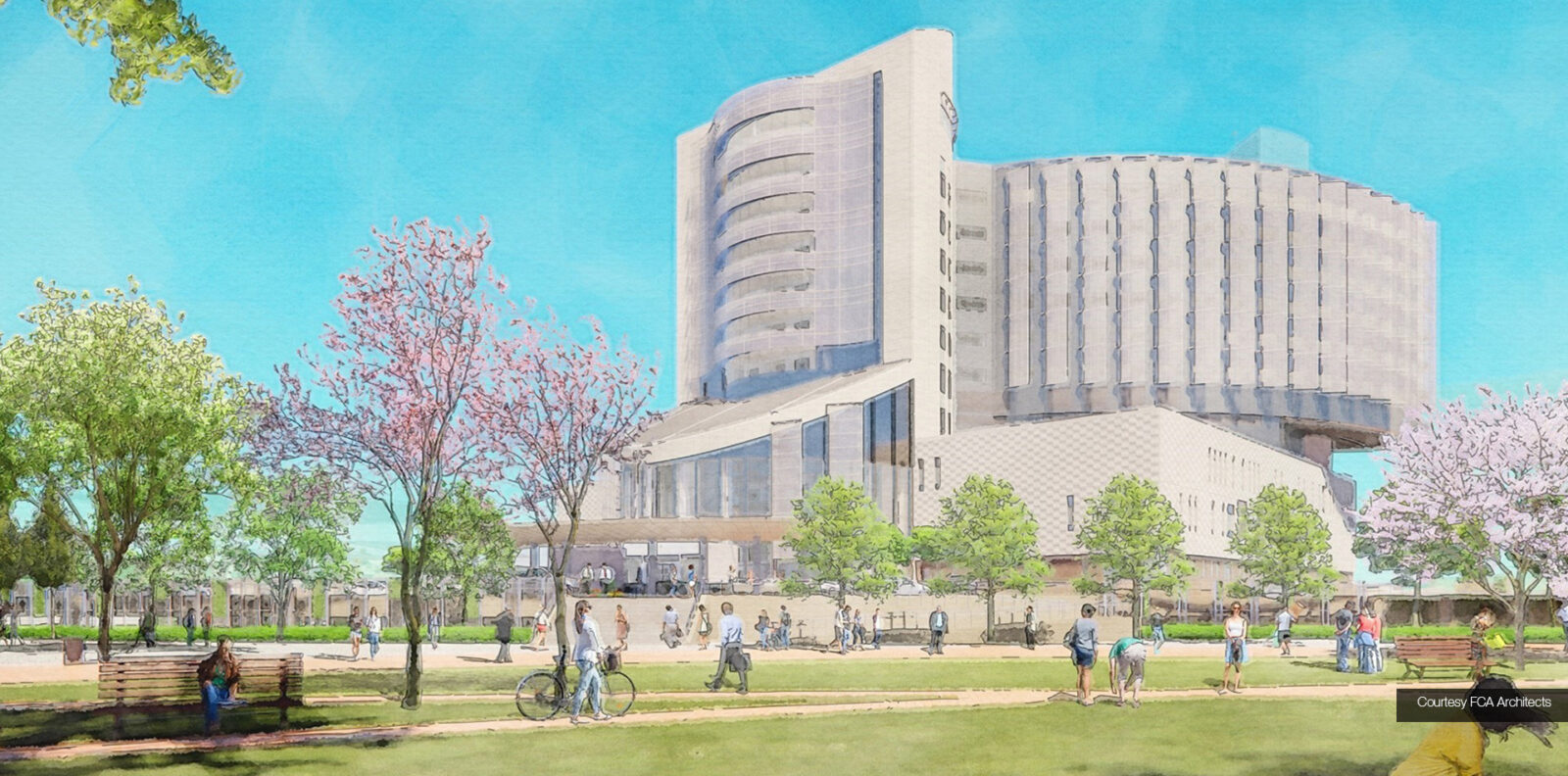Being the first at something is not an easy task. Navigating uncharted territory, developing adaptive management approaches, and participating in what resembles a scientific experiment takes courage.
ESA is fortunate enough to work with clients that have the fortitude to think differently and pursue new methods in the exploration of multi-benefit solutions. As a partner in these projects, our scientists, engineers, designers, and environmental consultants have been able to bring big ideas to fruition. It’s one thing to have a brilliant idea, and it’s another to usher it through the regulatory environment so that it can be built and, ultimately, provide benefit.
Below are some of the pilot projects ESA has contributed to or is currently working on, where our teams thrive in developing creative approaches as our clients pursue their “firsts.”
Offshore Wind on the West Coast
With prompting from President Biden to deploy 30 gigawatts of offshore wind by 2030, and California’s ambitious climate goals to achieve carbon neutrality by 2045, offshore wind development is gearing up in the state, starting with California’s first offshore wind project.
The CADEMO Offshore Wind Demonstration Project is a proposed wind farm that would be placed nearly three miles offshore from Vandenberg Space Force Base along California’s Central Coast. This offshore wind farm would consist of four floating approximately 800-foot-tall wind turbines capable of supplying 60 megawatts of renewable energy by 2027. Being the first project of its kind on the West Coast, it faces numerous logistical and regulatory challenges. It requires coordination between federal, state, and tribal entities as well as input from environmental groups, fisheries, other commercial industries, and the public—all of whom have a vested stake in the direction of the project.

Because this project could inform future energy projects along the entire West Coast, it is crucial to provide a complete environmental assessment that is understood by the public. ESA is fully aware of the complex nature of such an endeavor, and that it requires thorough, scientific-based research and analysis to inform decision-makers and the public about the potential environmental impacts of the project.
ESA is part of ICF’s consulting team—which includes H. T. Harvey & Associates, Applied Marine Sciences, and Moffatt & Nichol—assembled to provide environmental services for project developer Floventis Energy, a joint venture between Cierco and SBM Offshore. ESA is working with the California State Lands Commission to analyze how the application of wind technology in a marine environment may affect sensitive environmental and cultural resources, and will be investigating ways to implement practical solutions for the various concerned interests.
Project Nexus: Bringing Solar Panels Over Canals
With $20 million in funding from the State of California, the Turlock Irrigation District (TID) is embarking on a first-in-the-nation pilot project, constructing 8,500 feet of solar panels over a section of TID’s irrigation canals. Known as Project Nexus, this proof-of-concept project will test, research, and study how panel installations reduce water evaporation and improve water quality, while generating renewable energy. The project’s design and research will inform future projects across California, as the State pursues water conservation and climate resilience solutions.

Project Nexus is a first-in-the-nation pilot project to build solar panel canopies over a portion of existing irrigation canals.
As a longtime partner to TID, ESA prepared the project’s California Environmental Quality Act (CEQA) documentation. It was important to provide the novel project latitude to ensure all potential designs, locations, and deployment types are included in the CEQA document, and ESA conducted a broad-based environmental review. ESA also provided TID with detailed analyses of potential impacts on biological, cultural, and paleontology resources to affirm that the project meets environmental compliance requirements. In November 2022, TID released and adopted a Final Initial Study/Mitigated Negative Declaration and approved the project. The project is anticipated to break ground in fall 2023 and be complete in 2024.
Horizontal Levees: A New Type of Nature-Based Approach
Coastal communities continue to seek ways to adapt to projected sea-level rise and increased flood risks to protect resources in the face of climate change. ESA and partners are exploring how a new type of structure known as a horizontal levee can buffer shorelines from climate impacts with a nature-based approach.
In California’s East Bay Area, ESA, in collaboration with Peter Baye and researchers from UC Berkeley, designed the experimental Oro Loma Demonstration Project—the first horizontal levee project of its kind on the West Coast. The project evolved from an ESA-led Hayward Shoreline Sea Level Rise Study, through a partnership with the Oro Loma Sanitation District and the San Francisco Estuary Partnership.
A horizontal levee is composed of a broad, flat vegetated transitional slope placed between tidal marshes and coastal levees, similar to where hillslopes meet the historic marsh edge. Treated wastewater passes through the levee through a sub-surface filtration and refining process to reduce nutrient loads.
Oro Loma’s multi-benefit design demonstrates that a transitional wetland zone could protect against rising sea levels while simultaneously providing habitat and filtering wastewater discharged from the district’s nearby wastewater treatment plant. This experimental project is helping researchers understand how designs are performing and functioning.
Early research reveals that the horizontal levee removes 90 to 100 percent of nitrogen from the treated effluent—greatly improving water quality—but would require more treatment capacity to be more effective.
ESA is developing design modifications and testing how structure elements can more effectively treat traditional wastewater discharge as well as reverse osmosis concentrate while buffering against sea-level rise.

A diagram of the wet weather treatment basin and horizontal levee (ecotone slope) at the Oro Loma Demonstration Project.
ESA is developing design modifications and testing how structure elements can more effectively treat traditional wastewater discharge as well as reverse osmosis concentrate while buffering against sea-level rise. Following the success of the Oro Loma Demonstration Project, we are designing the next generation of horizontal levees around San Francisco Bay in San Leandro, Novato, Palo Alto, and Richmond.
If you have a pilot project in mind and would like to speak to someone on our team to learn more about our services, please reach out to Jim O’Toole, ESA Practice Director.







